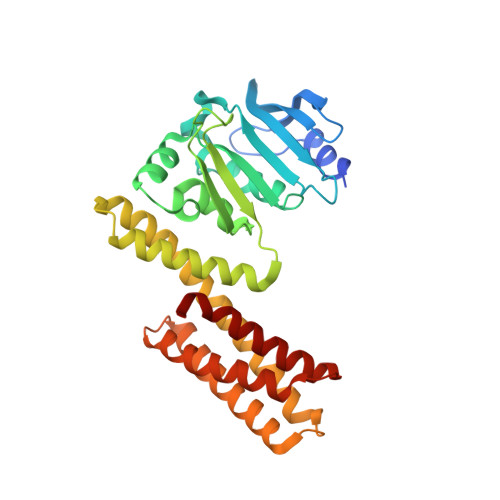On the predictability of the orientation of protein domains joined by a spanning alpha-helical linker.
Lai, Y.T., Jiang, L., Chen, W., Yeates, T.O.(2015) Protein Eng Des Sel 28: 491-500
- PubMed: 26243886
- DOI: https://doi.org/10.1093/protein/gzv035
- Primary Citation of Related Structures:
4ZSV, 4ZSX, 4ZSZ - PubMed Abstract:
Connecting proteins together in prescribed geometric arrangements is an important element in new areas of biomolecular design. In this study, we characterize the degree of three-dimensional orientational control that can be achieved when two protein domains that have alpha-helical termini are joined using an alpha-helical linker. A fusion between naturally oligomeric protein domains was designed in this fashion with the intent of creating a self-assembling 12-subunit tetrahedral protein cage. While the designed fusion protein failed to assemble into a tetrahedral cage in high yield, a series of crystal structures showed that the two fused components were indeed bridged by an intact alpha helix, although the fusion protein was distorted from the intended ideal configuration by bending of the helix, ranging from 7 to 35°. That range of deviation in orientation creates challenges for designing large, perfectly symmetric protein assemblies, although it should offer useful outcomes for other less geometrically demanding applications in synthetic biology.
- UCLA-DOE Institute for Genomics and Proteomics.
Organizational Affiliation:
















